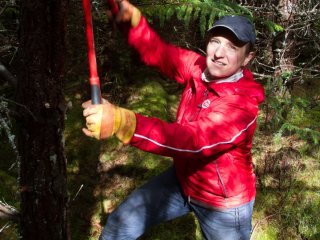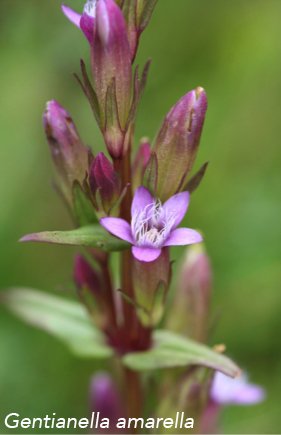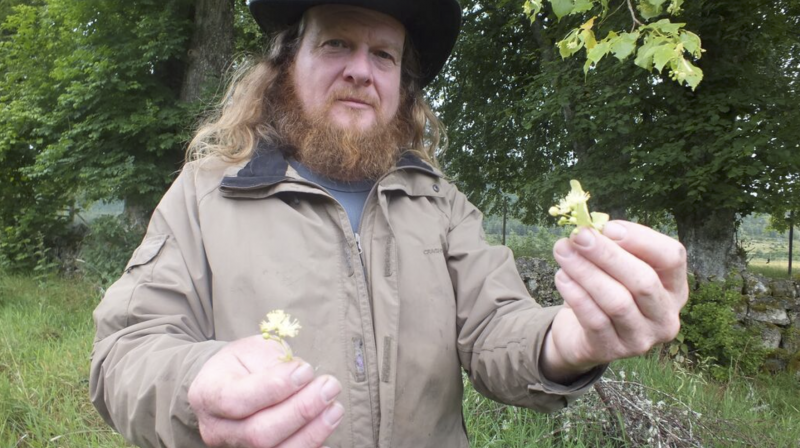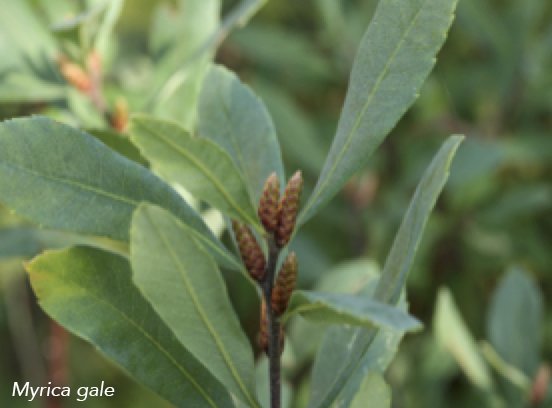A new world of botany for Long-Term Volunteer, Felicitas
 I’m finally home after nearly 4 weeks of my Long-Term Volunteer placement during my summer holiday. I had an amazing and very inspiring time. The warm and friendly welcome from staff, other Long-Term Volunteers working on the Estate made me feel very much at home from the very beginning. I especially enjoyed the open atmosphere of sharing knowledge and achieving things together.
I’m finally home after nearly 4 weeks of my Long-Term Volunteer placement during my summer holiday. I had an amazing and very inspiring time. The warm and friendly welcome from staff, other Long-Term Volunteers working on the Estate made me feel very much at home from the very beginning. I especially enjoyed the open atmosphere of sharing knowledge and achieving things together.
I was stunned by the pure amount of Meadow Sweet (Filipendula ulmaria) down by the river Morriston, a creamy white perennial belonging to the rose family.
My professional background is in forestry and landscape gardening with years of experience in hands-on practical work, such as trimming hedges, trees, lawns, construction work in private gardens as well as in urban settings. Being a teacher at a landscape gardening college gave me a 6-week summer break, which I decided to spend doing some meaningful volunteer work that fitted into my professional field. Therefore I applied with Trees for Life and was very happy to be accepted as a Long-Term Volunteer this summer.

I am deeply impressed by Trees for Life’s mission and what has already been achieved through hands-on practical work over the last years. The native tree nursery is absolutely stunning.
As a teacher of landscape gardening with a forestry background I have a keen interest in all plants, especially wild herbals. During my daily work, various workshops as well as my hikes over the estate, I came across many wonderful and very beautiful plants, some of them common in the Highlands but absent in the region where I live (that being the city of Aachen, Germany.) For example, Autumn Gentian (Gentianella amarella), Milkwort (Polygala vulgaris) or Bog Asphodel (Narthecium ossifragum).
 I was stunned by the pure amount of Meadow Sweet (Filipendula ulmaria) down by the river Morriston, a creamy white perennial belonging to the rose family. During Alasdair Taylors’ very recommendable workshop on edible/medicinal plants at Dundreggan I learnt how to use this plant for healing purposes (and also how to make a very nice tasting tea from it!). On the same workshop we learned how to use Bog Myrtel (Myrica gale) to make a very effective and skin friendly midge repellent (as well as the words “effective” and “midge repellent” can go together!)
I was stunned by the pure amount of Meadow Sweet (Filipendula ulmaria) down by the river Morriston, a creamy white perennial belonging to the rose family. During Alasdair Taylors’ very recommendable workshop on edible/medicinal plants at Dundreggan I learnt how to use this plant for healing purposes (and also how to make a very nice tasting tea from it!). On the same workshop we learned how to use Bog Myrtel (Myrica gale) to make a very effective and skin friendly midge repellent (as well as the words “effective” and “midge repellent” can go together!)
 Another plant I was excited to spot on the Estate is Common Eyebright (Euphrasia officinalis), a half parasitic plant feeding off the roots of grasses which usually has a little yellow dot inside the flower. On my weekend off in Glenn Affric I came across a purple variety of it. I had never seen one with this colour before.
Another plant I was excited to spot on the Estate is Common Eyebright (Euphrasia officinalis), a half parasitic plant feeding off the roots of grasses which usually has a little yellow dot inside the flower. On my weekend off in Glenn Affric I came across a purple variety of it. I had never seen one with this colour before.
Not uncommon as such, but especially beautiful to see at the end of August covering the hills, bogs and moors in all shades of purple, is heather. The bright colour of bell heather (Erica cinerea) in dry areas, and cross-leaved heather (Erica tetralix) in wetter places, as well as the softer shades of ling heather (Calluna vulgaris).  To differentiate between these species, take a closer look at their leaves: with bell and cross-leaved heather, the leaves are needle-shaped and somewhat sticking out from the stem, whilst with ling heather, the leaves are scale-shaped and bent up and inwards, and so form a little “c”.
To differentiate between these species, take a closer look at their leaves: with bell and cross-leaved heather, the leaves are needle-shaped and somewhat sticking out from the stem, whilst with ling heather, the leaves are scale-shaped and bent up and inwards, and so form a little “c”.
Besides admiring and investigating the wild plants of the area I enjoyed the daily work with the team of Long-Term Volunteers, from brashing, willow surveying, making fences visible and therefore safer for birds, and especially working in the nursery, pricking-out and tending to the future forest of the Highlands!
Thank you for the wonderful volunteering experience!
Felicitas

